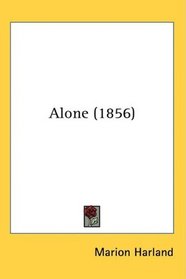Search -
Alone (1856)
Alone - 1856
Author:
This volume was published in 1856. — Very few women and even fewer men still remember Mary — Vigrginia Hawes Terhune, alias "Marion Harland". She was, — however, a Virginia Presbyterian woman who, as a very — young woman, helped shape the lives of American women, — indeed, women of the world, long before Martha Stewart of — recent notoriety. She did... more »
Author:
This volume was published in 1856. — Very few women and even fewer men still remember Mary — Vigrginia Hawes Terhune, alias "Marion Harland". She was, — however, a Virginia Presbyterian woman who, as a very — young woman, helped shape the lives of American women, — indeed, women of the world, long before Martha Stewart of — recent notoriety. She did... more »
ISBN-13: 9780548963586
ISBN-10: 0548963584
Publication Date: 6/2/2008
Pages: 388
Rating: ?
ISBN-10: 0548963584
Publication Date: 6/2/2008
Pages: 388
Rating: ?
0 stars, based on 0 rating
Publisher: Kessinger Publishing, LLC
Book Type: Hardcover
Other Versions: Paperback
Members Wishing: 1
Reviews: Amazon | Write a Review
Book Type: Hardcover
Other Versions: Paperback
Members Wishing: 1
Reviews: Amazon | Write a Review




